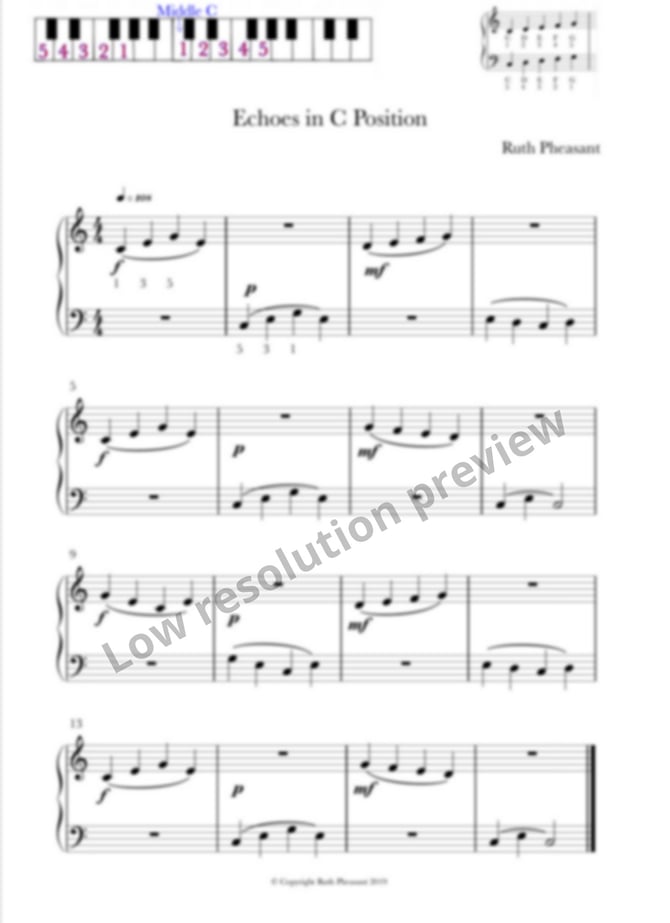
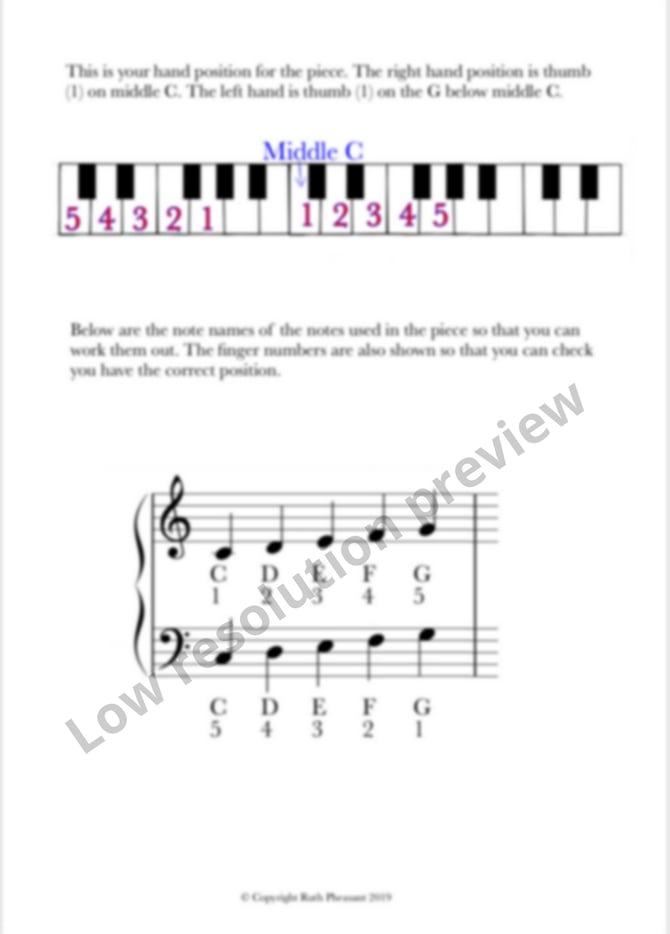
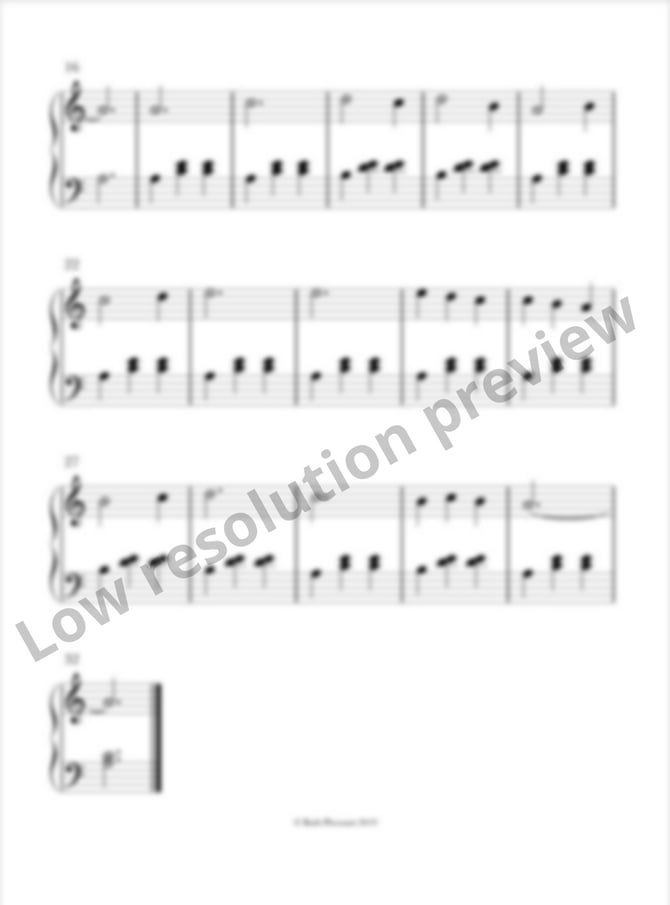
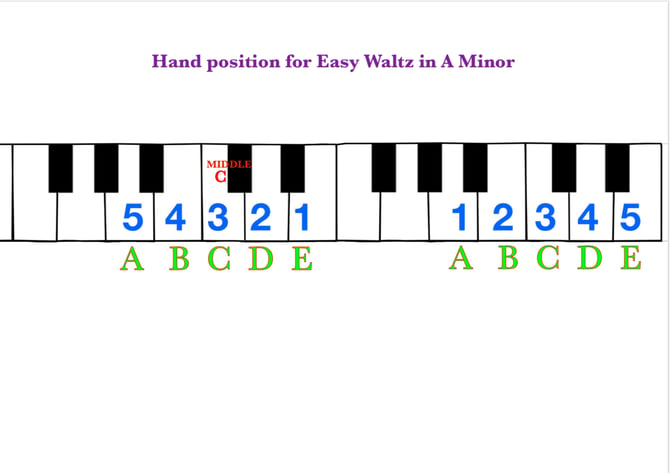
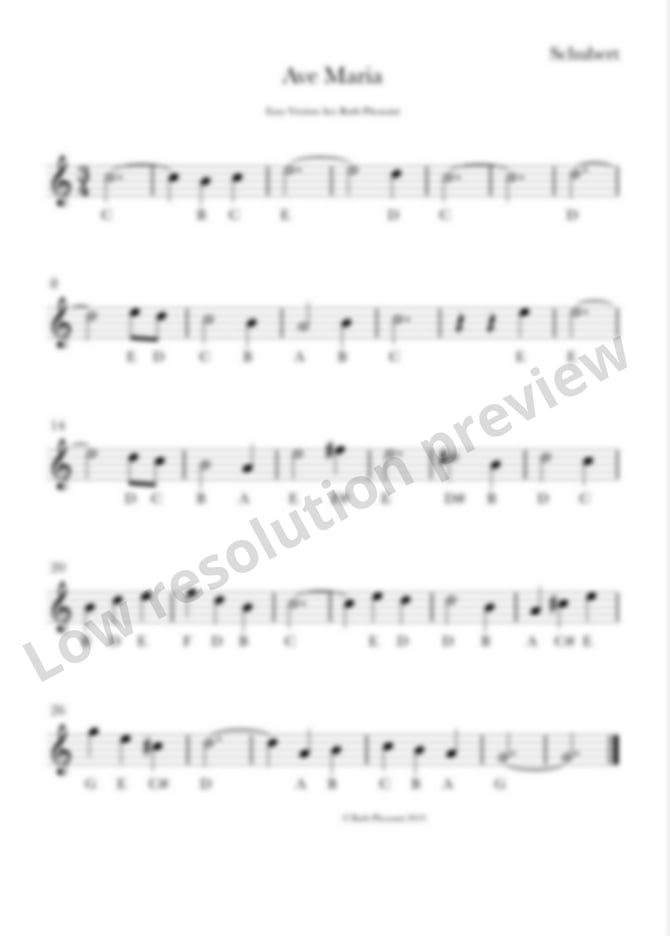
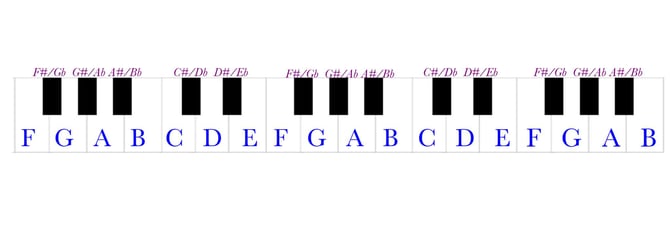
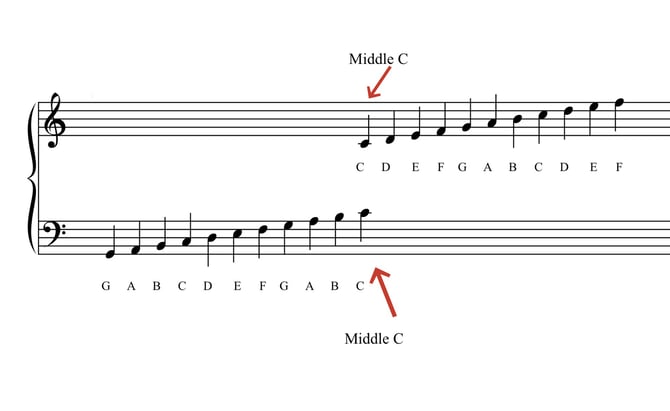
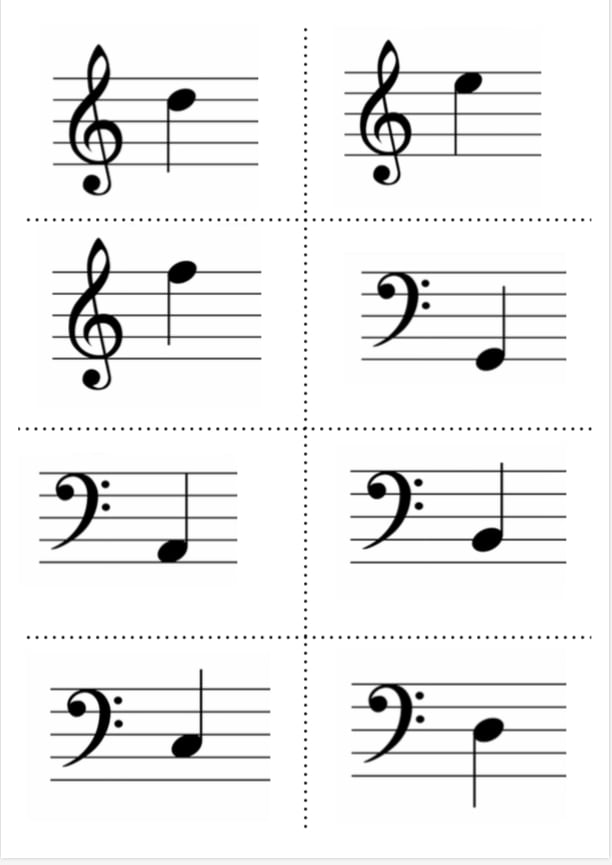
Lesson Package for Learning to Play Piano and Read Music - 9 PDF Downloads
A package of nine PDF downloads to help you learn to play piano and learn to read music if you are a near beginner on the piano. Read more detailed product information below
This package is suitable for near beginners on the piano. It helps if you already have a rough idea of where the notes are on the piano, and you understand the basics of note values, and have been learning for a few months. If not, read my free beginner's tutorials here: how to play piano and rhythm basics
In this package you will receive PDFs of four tunes, a keyboard chart with letter names, a grand staff chart with note names, and flash cards for practising note naming. The four tunes are as follows:
1. Easy Tune in Middle C Position - This is an easy tune I wrote for pupils who need to learn to read the notes in C major position on the piano, which is a commonly used beginning five finger hand position, often taught either just before or after middle C position. This tune is designed to help pupils pick up commonly used melodic patterns and their variations, and start to develop independence between the hands. It is written for alternating hands, and includes dynamics, slurs and some fingering. It also includes a keyboard chart and note chart showing the hand position and which fingers to use on which notes. The note chart is also very helpful for working out the actual notes, so that students who haven't yet learned to read music can start to develop this skill. I have found this combination of the specific melodic patterns and dynamic contrasts in this tune, along with the note and keyboard charts to be very effective at helping students learn to read music, and start to play something musical sounding on the piano.
2. Echoes in C Position - This is an easy tune I wrote for pupils who need to learn to read the notes in C major position on the piano, which is a commonly used beginning five finger hand position, often taught either just before or after middle C position. This tune is designed to help pupils pick up commonly used melodic patterns and their variations, and start to develop independence between the hands. It is written for alternating hands, and includes dynamics, slurs and some fingering. It also includes a keyboard chart and note chart showing the hand position and which fingers to use on which notes. The note chart is also very helpful for working out the actual notes, so that students who haven't yet learned to read music can start to develop this skill. I have found this combination of the specific melodic patterns and dynamic contrasts in this tune, along with the note and keyboard charts to be very effective at helping students learn to read music, and start to play something musical sounding on the piano.
3.Easy Waltz in A Minor - Learn to read music and learn how to play chords on the piano with this easy tune for both hands in A minor position.
Included with this tune - three PDFs: One PDF is the sheet music with every note labelled with letter names. Another PDF is just the sheet music without note names. Use this one to test yourself on your note reading and compare your answers with the labelled sheet music. The third PDF is a keyboard chart showing the hand position, notes and fingering on the piano keyboard.
4. Ave Maria easy version - Very easy version of the melody for Schubert's Ave Maria. Includes letter names on every note. Right hand treble clef only. 31 bars. This can start to increase your confidence with moving out of five finger positions on the piano. The previous three tunes are in five finger hand positions (middle C position, C major position, A minor position).
This package is suitable for near beginners on the piano. It helps if you already have a rough idea of where the notes are on the piano, and you understand the basics of note values, and have been learning for a few months. If not, read my free beginner's tutorials here: how to play piano and rhythm basics
In this package you will receive PDFs of four tunes, a keyboard chart with letter names, a grand staff chart with note names, and flash cards for practising note naming. The four tunes are as follows:
1. Easy Tune in Middle C Position - This is an easy tune I wrote for pupils who need to learn to read the notes in C major position on the piano, which is a commonly used beginning five finger hand position, often taught either just before or after middle C position. This tune is designed to help pupils pick up commonly used melodic patterns and their variations, and start to develop independence between the hands. It is written for alternating hands, and includes dynamics, slurs and some fingering. It also includes a keyboard chart and note chart showing the hand position and which fingers to use on which notes. The note chart is also very helpful for working out the actual notes, so that students who haven't yet learned to read music can start to develop this skill. I have found this combination of the specific melodic patterns and dynamic contrasts in this tune, along with the note and keyboard charts to be very effective at helping students learn to read music, and start to play something musical sounding on the piano.
2. Echoes in C Position - This is an easy tune I wrote for pupils who need to learn to read the notes in C major position on the piano, which is a commonly used beginning five finger hand position, often taught either just before or after middle C position. This tune is designed to help pupils pick up commonly used melodic patterns and their variations, and start to develop independence between the hands. It is written for alternating hands, and includes dynamics, slurs and some fingering. It also includes a keyboard chart and note chart showing the hand position and which fingers to use on which notes. The note chart is also very helpful for working out the actual notes, so that students who haven't yet learned to read music can start to develop this skill. I have found this combination of the specific melodic patterns and dynamic contrasts in this tune, along with the note and keyboard charts to be very effective at helping students learn to read music, and start to play something musical sounding on the piano.
3.Easy Waltz in A Minor - Learn to read music and learn how to play chords on the piano with this easy tune for both hands in A minor position.
Included with this tune - three PDFs: One PDF is the sheet music with every note labelled with letter names. Another PDF is just the sheet music without note names. Use this one to test yourself on your note reading and compare your answers with the labelled sheet music. The third PDF is a keyboard chart showing the hand position, notes and fingering on the piano keyboard.
4. Ave Maria easy version - Very easy version of the melody for Schubert's Ave Maria. Includes letter names on every note. Right hand treble clef only. 31 bars. This can start to increase your confidence with moving out of five finger positions on the piano. The previous three tunes are in five finger hand positions (middle C position, C major position, A minor position).

